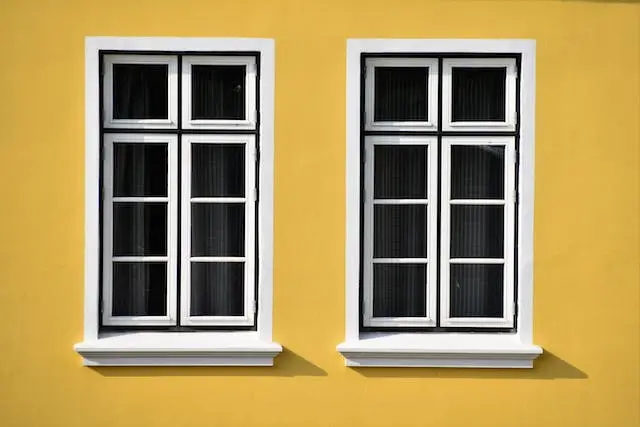As you navigate the ever-changing landscape of home design, windows have emerged as a cornerstone, significantly influencing your living spaces’ appearance and practical aspects. The recent shifts in window design trends are a testament to this evolution.
They exhibit a remarkable fusion of innovative technologies and design philosophies, prioritizing the visual appeal, energy efficiency, and utility of these essential home components.
These trends, from smart technology integration to a renewed focus on eco-friendly materials, represent a thoughtful balance between contemporary advancements and the timeless charm of traditional styles.
This article delves into these dynamic trends, offering valuable perspectives and creative solutions for those contemplating a window upgrade, ensuring their homes look exceptional and function optimally in today’s world.
Embracing Energy Efficiency
The trend toward energy efficiency in window design is not merely a fleeting style but a substantial shift toward sustainability. As environmental awareness grows, homeowners increasingly seek solutions that minimize their carbon footprint while enhancing their comfort. To achieve this, it’s crucial to install high-quality windows that embody the latest advancements in energy efficiency.
These windows play a pivotal role in this transition, featuring advanced technologies such as triple pane glazing, inert gas fills between panes, and improved framing materials. Such features significantly reduce heat loss during the winter and heat gain during the summer, ensuring a consistent and comfortable indoor climate.
Additionally, the use of smart glass, which dynamically adjusts its thermal properties, further optimizes energy consumption. By investing in high-quality, energy-efficient windows, homeowners not only contribute to a healthier planet but also enjoy a reduction in heating and cooling costs, making this choice a practical and eco-conscious one.
Integrating Smart Technology
Incorporating smart technology in window design is transforming how you interact with your home. Beyond automatic tinting and remote-controlled shades, advancements in this field now include windows with sensors that can detect weather changes, air quality, and even potential security breaches.
These intelligent windows can be integrated into home automation systems, allowing homeowners to control them via smartphones or voice commands. Additionally, advancements in electrochromic technology enable windows to change their opacity or color, providing privacy on demand without the need for curtains or blinds.
This technological integration offers unprecedented convenience and security. It enhances the windows’ energy efficiency and aesthetic appeal, making them an integral part of the modern smart home ecosystem.
Prioritizing Natural Light
The emphasis on natural light in window design goes beyond aesthetics; it’s about creating a healthier and more vibrant living environment. Large windows with minimal frames illuminate interiors and boost mood and productivity by providing ample daylight and a visual connection to the natural world.
Innovations in glazing technology, such as UV-blocking coatings and heat-reflective treatments, ensure that the benefits of natural light are enjoyed without the drawbacks of harmful UV rays or excessive heat.
Moreover, the strategic placement of windows, including skylights and clerestory windows, can maximize light penetration, especially in densely built areas or homes with limited exposure to direct sunlight. This approach aligns with biophilic design principles, underscoring the importance of natural elements in your living spaces for overall well-being.
Combining Style with Functionality
The convergence of style and functionality in window design reflects a holistic approach to home aesthetics. Windows are no longer just passive elements but dynamic components that contribute to the home’s character and comfort. Innovations like adjustable louvers, built-in shutters, and magnetic insect screens allow homeowners to modify their living spaces according to their needs without compromising the visual appeal.
The trend towards personalized design also extends to the color and texture of frames, with options ranging from classic wood finishes to modern metallic hues, allowing windows to either stand out as a focal point or blend seamlessly with the architectural style. This customizability ensures that windows are functional installations and integral parts of the home’s design narrative.
Utilizing Sustainable Materials
The focus on sustainable materials in window construction reflects a broader commitment to environmentally responsible building practices. Using renewable materials like bamboo and composite frames, which combine wood with recycled plastic, marks a shift towards more sustainable production methods.
These materials reduce the environmental impact and offer improved resistance to weathering, decay, and pests. The trend towards sustainable materials is also seen in the increasing use of high-performance recycled metals, which offer the same structural and aesthetic qualities as new materials but with a significantly lower carbon footprint.
Homeowners choose windows made from these materials to support sustainable industry practices while benefiting from high-quality, durable products.
Blending Indoor and Outdoor Spaces
Blending indoor and outdoor spaces through window design responds to the growing desire for open, airy living environments. This design philosophy extends beyond mere aesthetics, emphasizing the psychological and health benefits of a closer connection with the outdoors.
Large glass doors and windows open to gardens, patios, or balconies facilitate a seamless flow between indoor and outdoor areas, encouraging a more active and nature-oriented lifestyle.
This design approach also plays a critical role in small urban dwellings, where space is at a premium, by visually expanding the living area and bringing in natural elements, enhancing the perception of space and openness.
Conclusion
The current trends in window design reflect a blend of aesthetic appeal, technological advancement, and a commitment to sustainability. Whether you’re building a new home or renovating an existing one, these trends offer many options to enhance your living space. By choosing the right windows, you not only improve the look and feel of your home but also contribute to a more sustainable and efficient lifestyle.
